Adopting a new dog is an exciting time. Whether you’re set on adopting a basenji, already have one, or are conducting research on which dog is the best fit for your family, you’ll learn all you need to know about basenji-rearing in this article.
Keep reading to get information from veterinarians on basenji training and behavior, learn how to housebreak, and discover the foundational cues this breed needs to learn in puppyhood.
Breed Summary
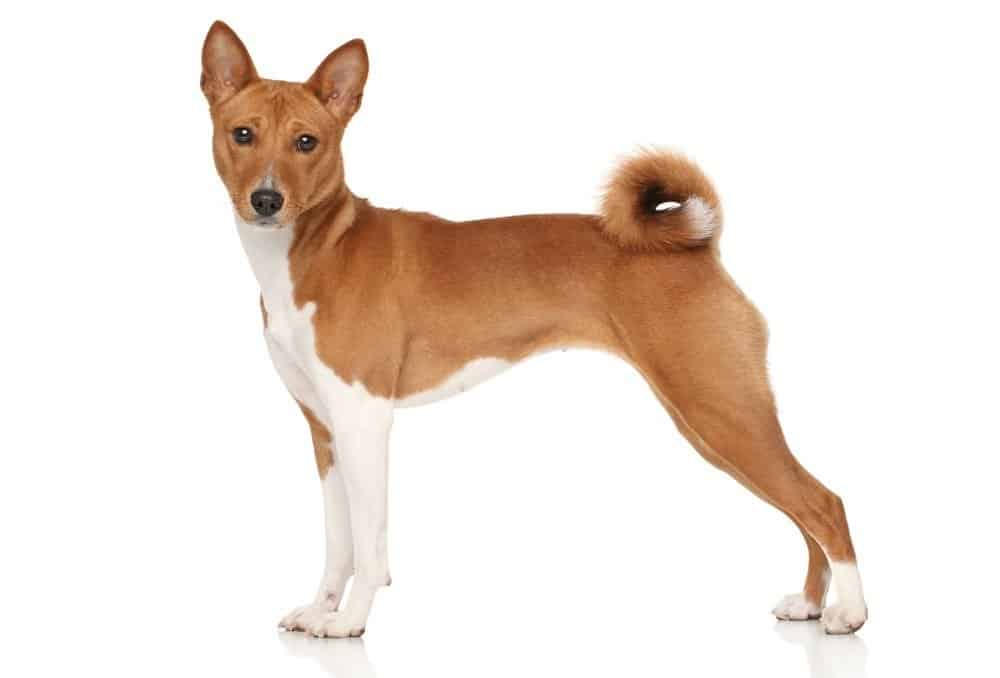
Basenjis, like all breeds, should be trained and socialized with people and animals from an early age. Dogs that are not exposed to different situations, people, and experiences can become timid adults.
©Jagodka/Shutterstock.com
Basenjis, often called the “barkless dog,” are unique and lovely pets. Just like a Shiba Inu, basenjis have a cat-like behavior in both their grooming of themselves and their play styles. Bred to hunt in Africa, this compact dog breed runs like a horse, yodels to make themselves known, and shares a range of complex emotions through its expressive face.
As a family dog, basenjis suit the lifestyle of active individuals who can keep their dog both mentally and physically stimulated for much of the day. They’re also a better choice for experienced pet parents, as training a basenji can prove difficult at times.
Basenji Growth and Weight Chart by Age
While the growth of breed individuals varies, the chart below suggests a rough growth and weight timeline owners can expect.
| Age | Male Weight | Female Weight |
|---|---|---|
| Birth | 3 pounds | 2 pounds |
| 1 Month | 6.3 pounds | 5.4 pounds |
| 6 Weeks | 7.1 pounds | 6.3 pounds |
| 2 Months | 9.5 pounds | 8.1 pounds |
| 3 Months | 10.8 pounds | 9.5 pounds |
| 4 Months | 12.1 pounds | 11.2 pounds |
| 5 Months | 14.3 pounds | 13.6 pounds |
| 6 Months | 16.7 pounds | 15.2 pounds |
| 7 Months | 18.1 pounds | 17.1 pounds |
| 8 Months | 19 pounds | 18 pounds |
| 9 Months | 20.1 pounds | 19.1 pounds |
| 10 Months | 20.3 pounds | 19.4 pounds |
| 11 Months | 20.8 pounds | 19.6 pounds |
| 12 Months | 21 pounds | 19.8 pounds |
| 2 Years | 22 pounds | 20 pounds |
When Will My Basenji Stop Growing?
Breed individuals vary widely on their rate of growth. When basenjis stop growing comes down more to lifestyle, exercise, and nutrition than it does their bloodline. On average, basenjis will experience slowed growth around the 12-month mark and probably reach their full maturity weight and height between 14 and 16 months old.
How Big Will My Basenji Be When It’s Fully Grown?
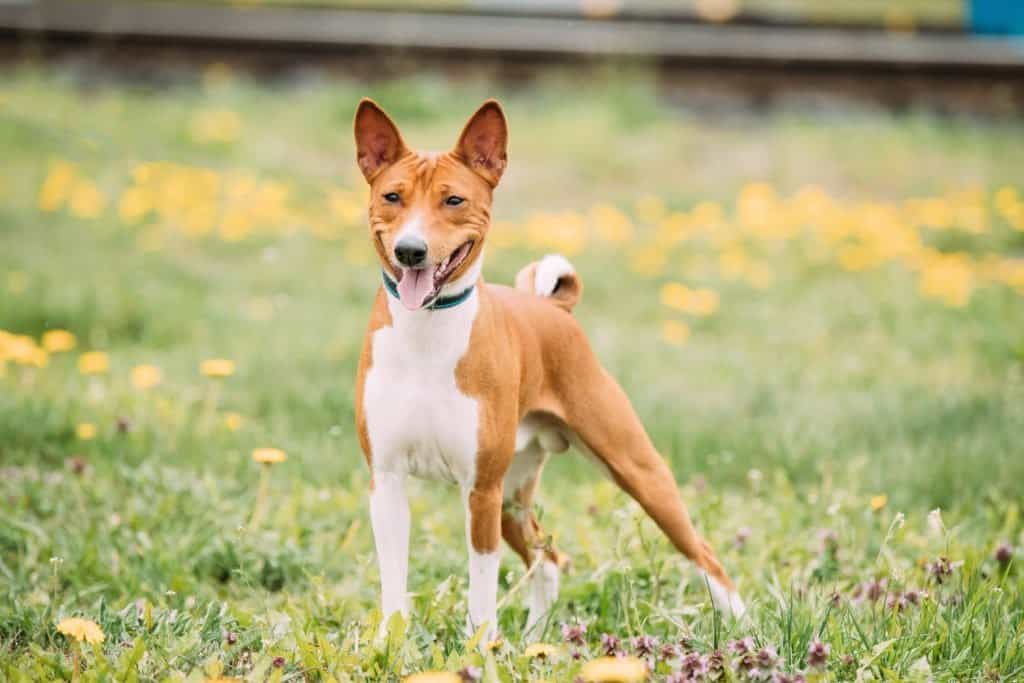
Standard basenjis are medium-sized dogs.
©Grisha Bruev/Shutterstock.com
The breed standard of a basenji is about 17 inches in height and 24 pounds in weight for males, 16 inches tall and 22 pounds heavy for female individuals of the breed. Not all breed individuals will conform to the standard set out by the American Kennel Club, but should hover around these numbers on average as a healthy basenji.
Owners of basenjis severely over- or underweight should consult with their veterinarian to discuss options on if their dog needs special supplements to aid growth — or a diet to control weight gain.
When Should My Basenji Be Spayed or Neutered?
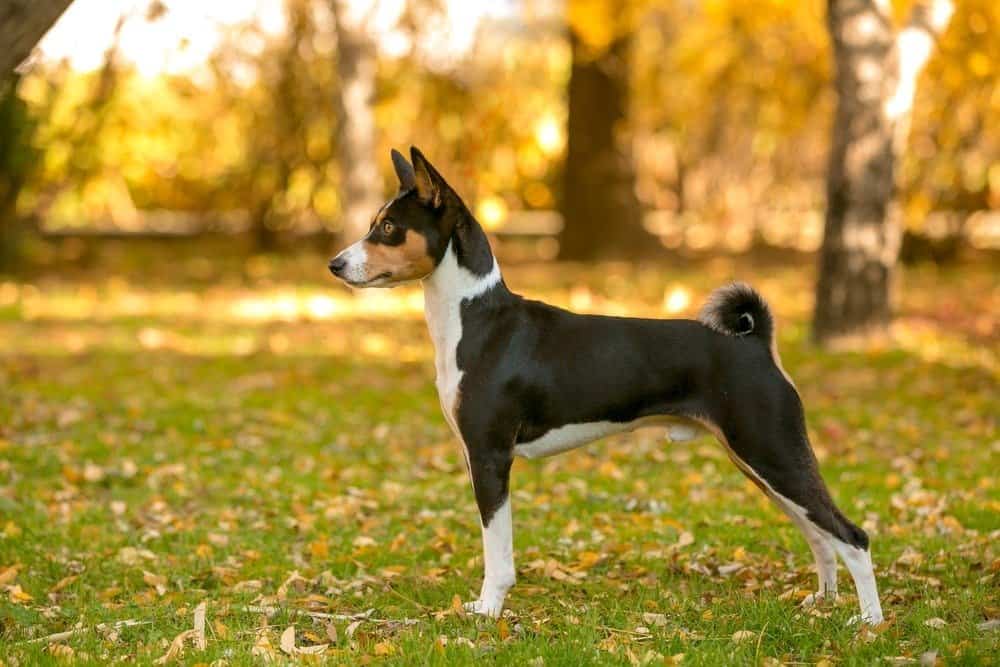
When to fix your basenji depends on your vet’s recommendation.
©Golland/Shutterstock.com
Veterinarians and breeders agree that you can neuter your basenji around the one-year mark. Neutering is less invasive than spaying and can happen any time after your boy basenji reaches nine or 10 months old, but consult your vet on the best time for you to start the surgery.
Spaying removes the ovaries of a female dog to prevent pregnancies and ovarian cancer — and owners usually want to spay their basenji pup before her first heat cycle (around the six month mark). Again, it’s best to confer with your vet on when the best time to fix her is to keep her healthy — while allowing her hormones to develop her body at a normal rate.
When Should My Basenji Be House Broken?
Like other fastidious and clean breeds, basenjis don’t like to sleep or play near their bathroom. As such, they’re relatively easy to housebreak. With a mix of positive reinforcement and consistent training, your basenji can become fully, reliably housebroken in as little as a few weeks.
When Should My Basenji Stop Eating Puppy Food?
Confer with your vet on the specific week or month milestone your basenji can transition to adult food. On average, basenjis eat puppy food until about nine months old, or at least when they’re the majority of the way to their mature weight. Transitioning food takes between two and four weeks for a basenji’s digestive system to adjust.
When Will My Basenji Start Losing Teeth?
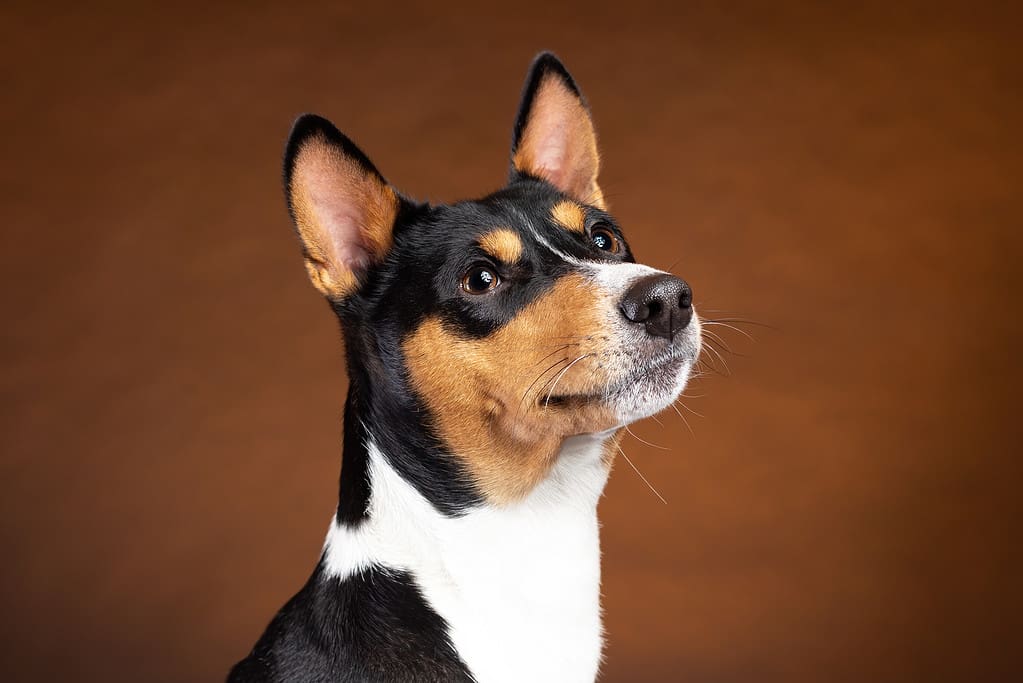
Basenjis will begin to lose teeth around three or four months old.
©Irina Nedikova/iStock via Getty Images
Like most other purebred breeds, basenjis will begin to lose their teeth around the three to four month mark. This makes room for the several new teeth they’ll have — just make sure you have plenty of soothing teething treats for your basenji puppy to endure this uncomfortable season of puppyhood.
When Should I Start Training My Basenji?
Even the experienced dog owner should start training their basenji as soon as they adopt them. Basenjis are independent and often want to take the lead in a relationship. Because of this stubbornness, veterinarians and animal behaviorists encourage owners to use bite-sized training sessions several times a day through puppyhood to set a foundation for learning, and build on top of it as the dog matures.
Dr. Sara Ochoa of Hound Games has worked with basenji dogs for years. She sat down with A-Z Animals to discuss some tips for training.
“I’ve lived with basenjis for many years, I’ve learned a thing or two about training them,” she said. “The key is patience, persistence, and keeping things positive. Basenjis are smart but independent. They respond best to short five to 10 minute training sessions focused on respect, not strict obedience. I like to make training feel like a game we both enjoy. Attending a fun obedience class is a great way for owners to bond with their basenjis.”
What Cues Should I Teach My Basenji First?
Without a doubt, the first cues you need to teach your basenji are:
- Sit.
- Stay.
- Come.
- A release word.
Because basenjis love to explore, recall skills and the stay command can prevent off-leash accidents. Outside of the above cues, leash manners remain of paramount importance. Your basenji should learn how to properly walk on a leash without pulling long before other more complex (or even silly) tricks.
When Will My Basenji Calm Down?
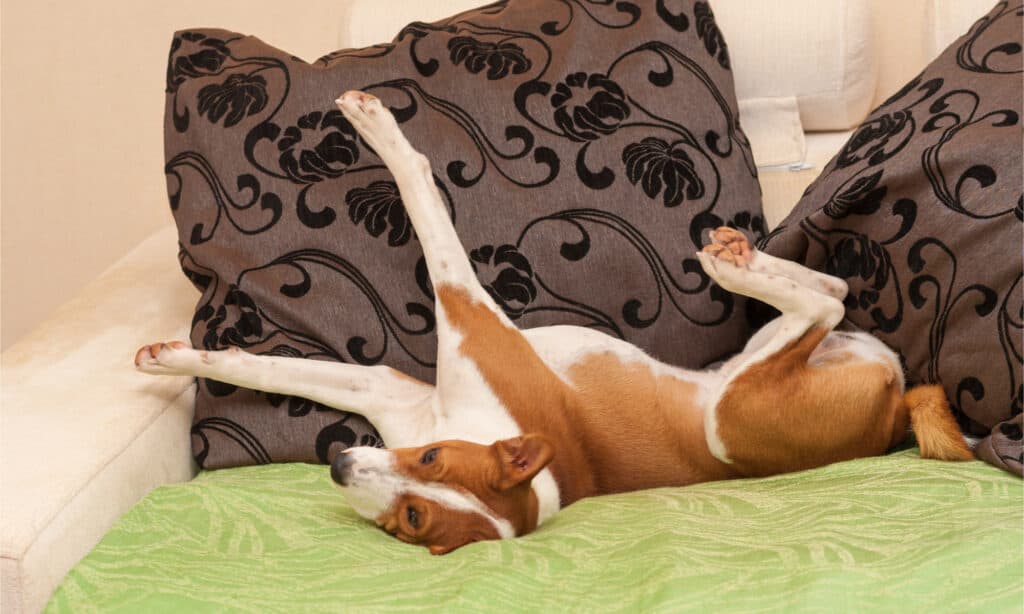
Owners will enjoy their basenji best if they are able to meet the dog halfway and have a sense of humor about the mischief they can get into.
©Yuri Kravchenko/Shutterstock.com
Bred to hunt, basenjis have a ton of energy. Described by some at VCA Animal Hospitals as “spirited and curious,” basenjis have a nose like a bloodhound and an ability to run like a greyhound. They need significant exercise and mental stimulation, so the faster you can get your basenji on an exercise routine that works for them, the faster you’ll be able to anticipate their need for more entertainment.
As with all dog breeds, puppyhood is a roller coaster of energy and sleep. Within the first year, you should have a pretty good grasp of what excitement is your basenji’s personality and what is leftover puppy energy.
Common Health Issues Your Basenji Might Experience
Basenjis remain relatively healthy dogs according to the American Kennel Club and the Basenji Club of America. Still these purebred dogs have a proclivity to inherit or develop several different diseases, including:
- IPSID, or ImmunoProliferative Small Intestinal Disease, is an inflammatory bowel disease and malabsorption issue that prevents the basenji from using the nutrients they intake.
- Fanconi Syndrome, a kidney issue that occurs in about seven percent of basenjis. If left untreated, it becomes fatal.
- Hemolytic anemia, though rare, can develop in the form of pyruvate kinase-deficiency hemolytic anemia.
- Thyroid issues, like hypothyroidism, which is a known occurrence in basenjis.
- Hip dysplasia, a condition in which the bone doesn’t fit a poorly-formed hip socket. It can lead to lameness and/or arthritis.
- Patellar luxation, when the kneecap consistently slides out of place on the femoral groove.
- Eye issues, including progressive retinal atrophy, corneal dystrophy, and colobomas.
- Inguinal hernias, which won’t usually cause many problems or pain but are good to be aware about.
Pictures of Basenji as Puppies

Basenjis usually have litters of four to six puppies.
©alekta/iStock via Getty Images
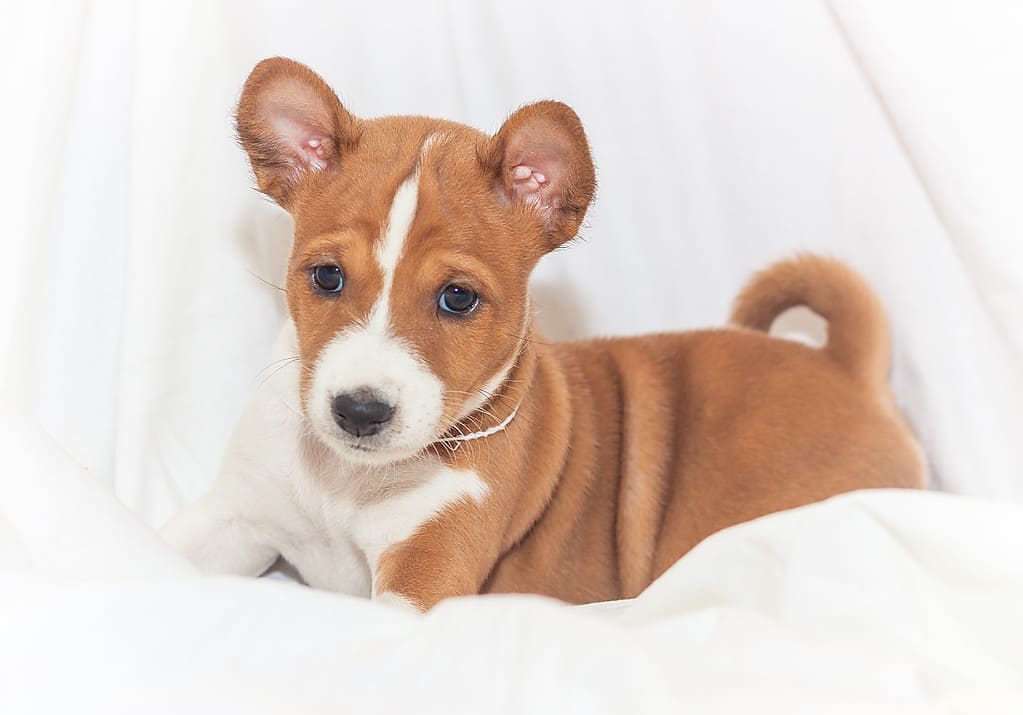
Basenjis are an African dog breed.
©j-paul/iStock via Getty Images

Owners enjoy basenji puppies for their mischief, sweetness, and yodel.
©Cast Of Thousands/Shutterstock.com
Pictures of Basenji at 6 Months
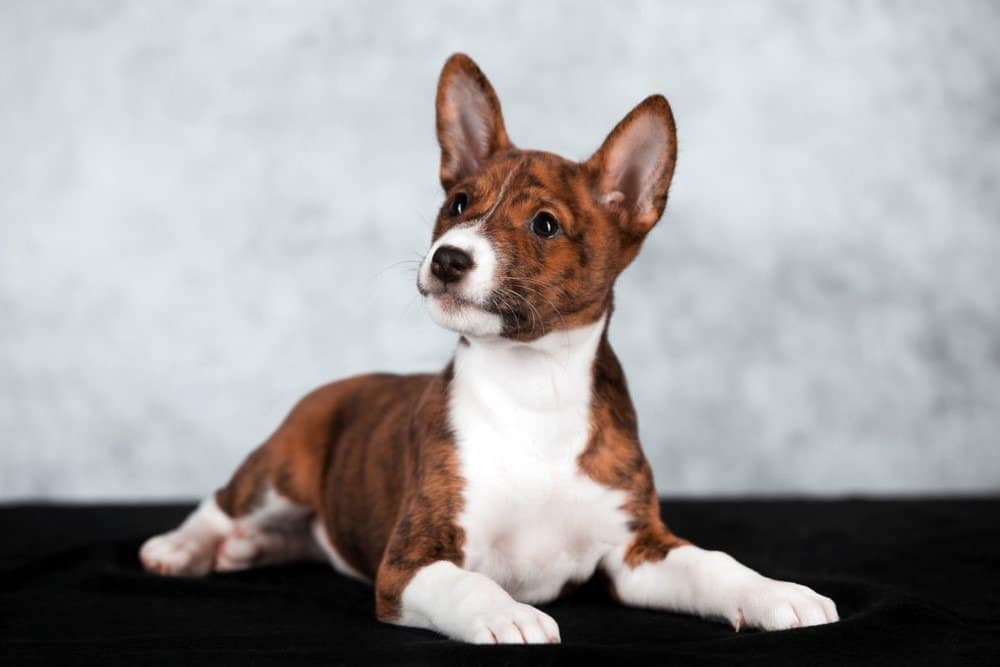
Basenji mixes have variable temperaments depending on the breed they are mixed with, but basenjis themselves are noted as intelligent, affectionate, and highly alert.
©OlesyaNickolaeva/Shutterstock.com
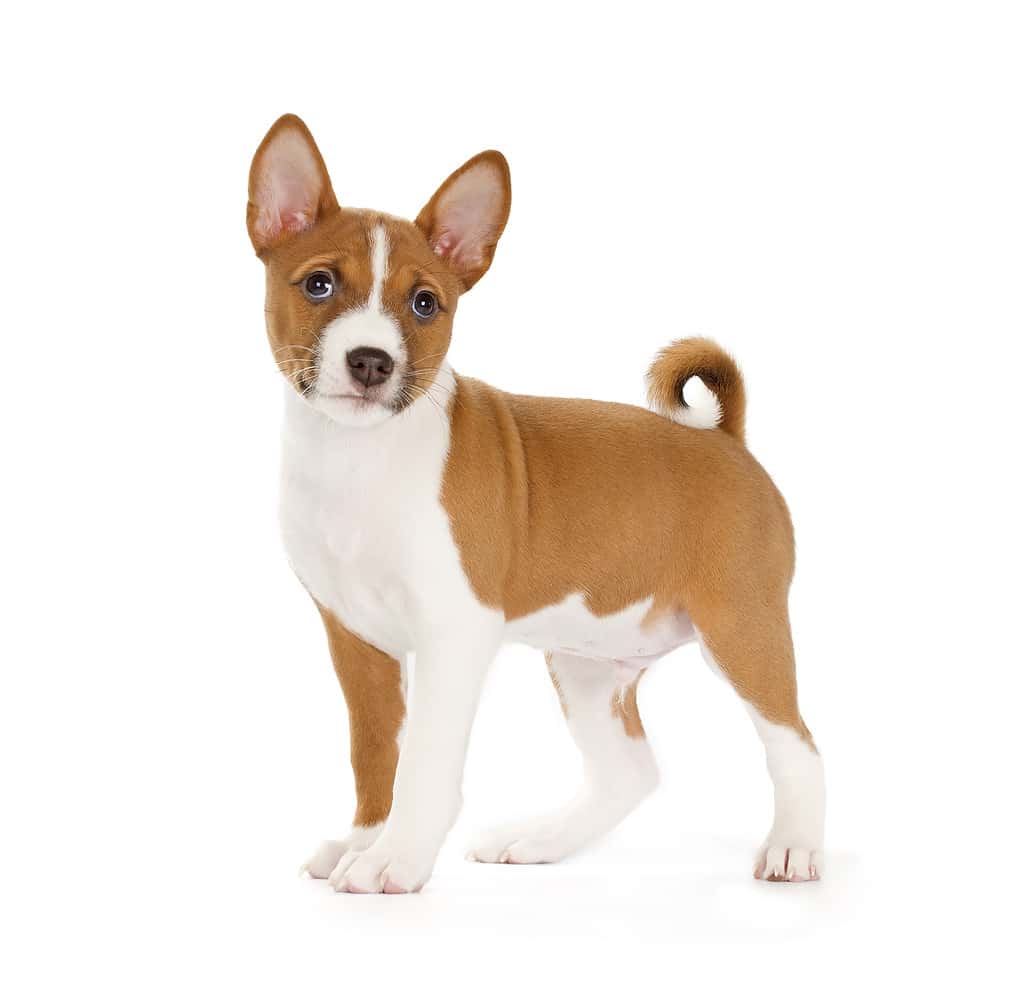
The basenji has a spitz tail.
©Silense/iStock via Getty Images
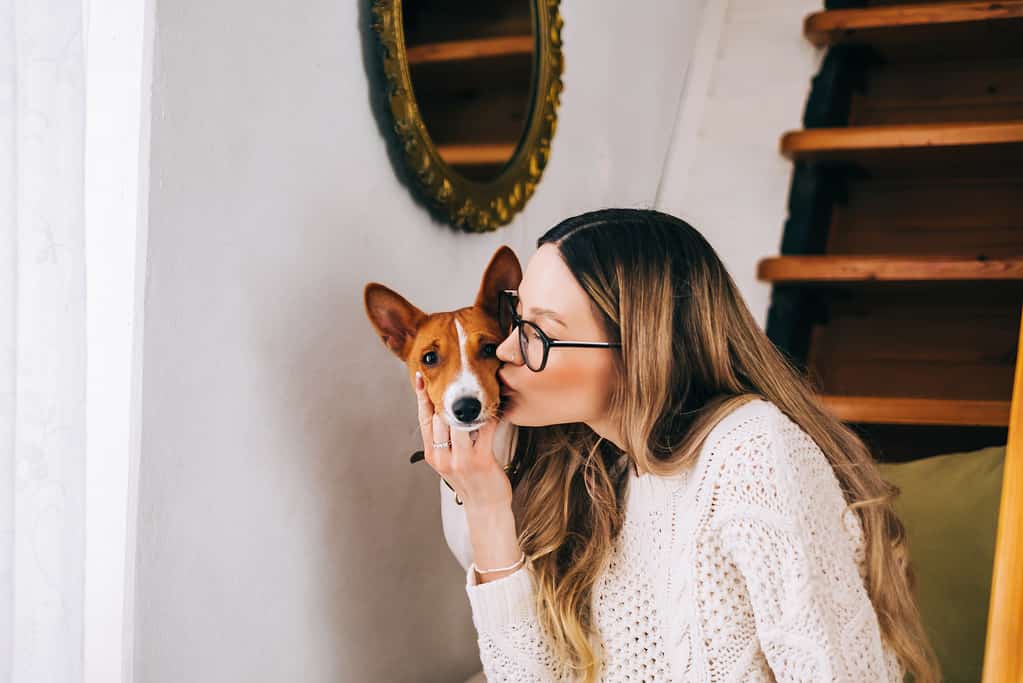
Basenji dogs love to protect their humans.
©nikkimeel/iStock via Getty Images
Pictures of Fully Grown Basenji
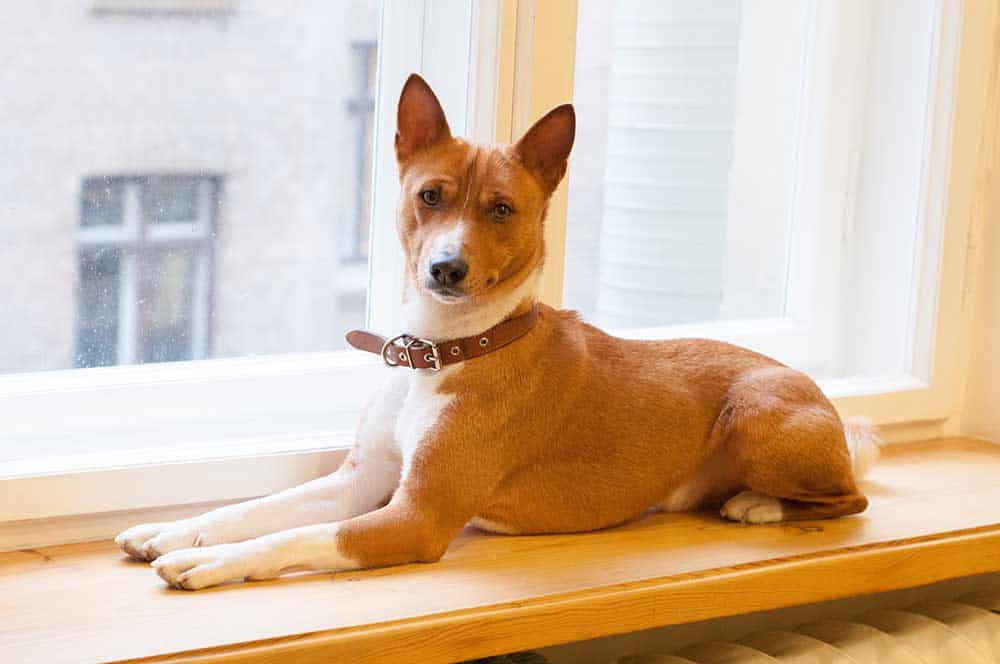
The basenji is happy to relax for part of the day, so long as they get exercise as well.
©Zanna Pesnina/Shutterstock.com
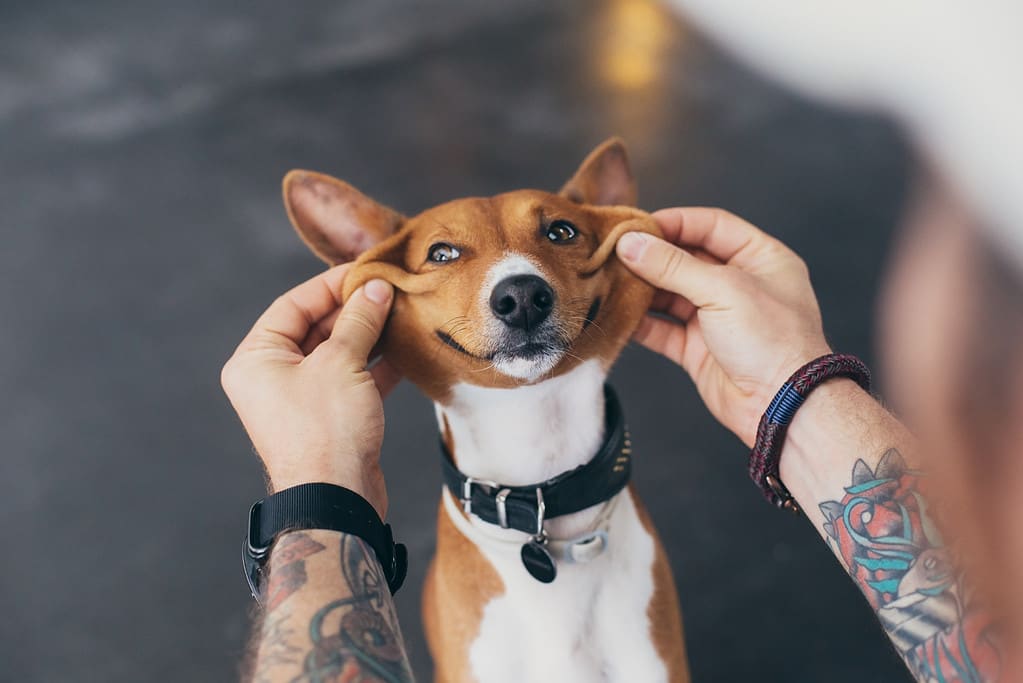
Owners and their basenjis can have a silly, close relationship once they build trust with each other.
©DeRepente/iStock via Getty Images

Though the basenji doesn’t bark conventionally, it will make itself known with yodel-like sounds.
©Evrymmnt/iStock via Getty Images
The photo featured at the top of this post is © New Africa/Shutterstock.com
Ready to discover the top 10 cutest dog breeds in the entire world?
How about the fastest dogs, the largest dogs and those that are -- quite frankly -- just the kindest dogs on the planet? Each day, AZ Animals sends out lists just like this to our thousands of email subscribers. And the best part? It's FREE. Join today by entering your email below.
Thank you for reading! Have some feedback for us? Contact the AZ Animals editorial team.







